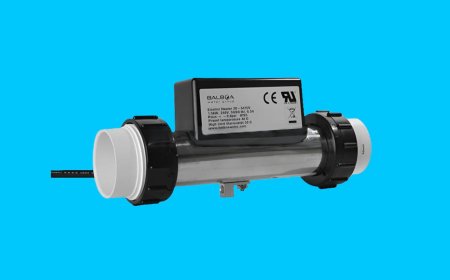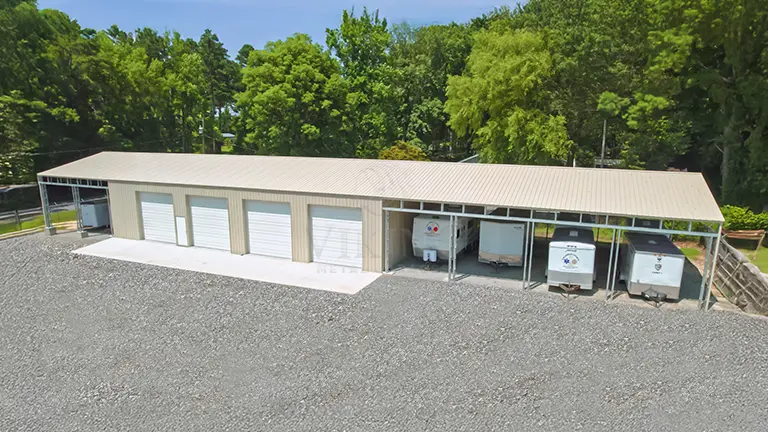The Advantages of Using Steel Barns for Agricultural Storage
Learn how steel barns provide durable, weather-resistant agricultural storage that protects equipment, cuts maintenance costs, and boosts long-term farm efficiency.

Suppose you have worked hard planting, harvesting, and storing, and yet losses still sneak in because your storage building isn't up to the task. It can feel frustrating when you notice a loss. But the good news is there's a smarter alternative: steel barns for agricultural storage. In this post, we will walk you through exactly why they matter, how they protect your farm assets, and what you should think about before choosing one.
Why Storage Is a Big Deal for Farmers?
Actually, many farmers underestimate storage risk. For example, in certain crops, if you store outside or under poor conditions, you might face up to 10 % loss or more simply from exposure over time. And globally, inadequate storage and handling account for roughly one-third of all food losses.
So if you ask, "Why am I losing so much hay, grain, or equipment value?”, one answer often is: weak or unsuitable storage. Poorly built buildings let moisture, pests, wind, and temperature swings get to your stuff. By contrast, a well-built steel barn changes all that.
Moreover, the things you are trying to protect, machinery, feed, harvested crops, seed, bales, each have their own vulnerabilities. For instance, untreated hay bales stored outside can lose dry matter, meaning you have harvested more than you effectively store. Thus, investing in proper storage is not optional; it's essential.
What Are You Storing and Why It Matters
Let's talk about what you are protecting, because each item you store has its own risks, and your storage solution should match those risks.
- Hay and forage bales: If exposed to moisture, they lose dry matter. As per one estimate, even a 10 % storage loss means that for every 10 bales, you are down to effectively 9.
- Grain and seed: Poor storage conditions lead to insect, fungal, and moisture damage. Some reports show significant losses in storage stages due to weak infrastructure.
- Farm machinery and equipment: When you combine harvesters, tractors, they cost a lot of money. If stored under a weak roof or outdoors, they are at risk of rust, and warranty voiding.
- Feed, fertilizer, supplies: Spoiled feed or chemicals rendered ineffective by moisture equals wasted cost and risk for animals.
- Livestock-related gear or small animal shelters: Even animals need shelter from wind, rain, extremes; a durable barn covers that, too.
So keeping all of this safe is more than just convenience. It directly impacts your bottom line and productivity.
What Steel Barns Bring to the Table for Storage
When it comes to farming, every decision affects your bottom line and your peace of mind. Old barns and wooden sheds might hold sentimental value, but they don't always hold up against real-world farm challenges. That's why farmers have started using metal farm buildings. Let's take a closer look at how these steel structures fix the most common storage issues farmers face every single day.
1. Built to Battle the Weather - No More Crop and Equipment Damage
One of the biggest worries for any farmer is the weather. Strong winds, heavy rain, snow, and blazing summers all take a toll on your storage. Wooden barns swell, crack, or rot in a few years. A steel barn, on the other hand, is built to face those weather tantrums head-on. Its strong framing and corrosion-resistant coating keep your equipment, feed, and produce safe year-round. Even during storms, your structure will not shift or weaken.
Moreover, since steel doesn't absorb moisture, there is no warping or mold buildup, which means your hay stays dry and usable, not moldy or spoiled. Therefore, you can stop worrying about weather damage and focus on running your farm instead.
2. Say Goodbye to Pests and Decay - Steel Doesn't Feed Termites
Here's a common frustration: pests. Wooden barns attract termites, rodents, and other unwanted visitors. Over time, they chew through beams and ruin stored items like seed bags or feed sacks.
Steel barns solve that instantly - because there's nothing for pests to eat or nest in. The smooth, non-porous surfaces keep rodents and insects from gnawing or burrowing. Moreover, no wooden parts mean no rot, so your metal barn structure stays solid for decades. That durability doesn't just save you on pest control costs; it also protects against structural failure that can destroy stored grain or machinery. It's simple: pests love wood, but they can't bite your agricultural steel building.
3. Designed for Flexibility - One Barn, Many Uses
Every farm is different. One might focus on hay and feed, another on tractors and harvesting equipment, and another on livestock. That's why flexibility matters so much. A metal farm building is easy to customize, from open bays for machinery to enclosed rooms for storage, even temperature-controlled sections for seed preservation. Moreover, you can add partitions, install racks, or leave the interior completely open for easy vehicle movement.
Let's say your farm grows over time. You add new machines or shift to a different crop. No problem, a steel barn can be expanded later without tearing down walls. That flexibility helps your building grow along with your business.
4. Faster Setup, Less Downtime - Because Every Day Counts
Farmers don't have months to wait for construction. The season moves quickly, and every week of delay can cost money. Traditional barns, especially wooden ones, can take ages to build and need multiple labor teams. Here's where prefabricated steel barns step in.
Since most parts are pre-engineered and delivered ready for assembly, construction time drops dramatically. You can often get a structure up and running in a fraction of the time it would take to build with concrete or wood. Therefore, you should protect your harvest sooner, organize your tools faster, and get back to what matters: keeping your operation productive and efficient.
5. Low Maintenance Means - More Savings Down the Road
Let's be honest: maintenance costs eat into profits. Wooden barns need repainting, patching, pest treatment, and roof replacements. Every few years, it's something new. But with steel, those worries disappear. There's no repainting every season, no termite treatment, no rot repair. You might wash off dirt occasionally, but that's about it.
Moreover, steel doesn't burn easily, reducing fire risk and insurance costs. So instead of pouring money into endless upkeep, you can reinvest in seeds, equipment, or expansion. A little care goes a long way, and a steel barn rewards that care by lasting 40-50 years or more.
6. Protects Your Investment - And Boosts Farm Value
When you add a sturdy steel barn, you are not just adding a building; you are adding value to your property. Potential buyers or future investors see a durable, ready-to-use structure as a sign of a well-managed operation. Moreover, these barns don't lose structural integrity over time like traditional ones do. They retain resale value, which means even if you move, upgrade, or sell, your investment pays you back. In short, prefab barns protect both what's inside and what's outside, your assets and your property's worth.
7. Sustainable and Future-Ready - Because Farming is About the Long Game
Farming is about nurturing the land, and that includes making eco-friendly choices. Steel farm structures fit perfectly into that goal. They are made from recyclable materials and can be reused or repurposed easily if your farm needs change.
Moreover, modern steel coatings and insulation help reduce energy waste, keeping interiors cooler in summer and warmer in winter. So you save on electricity, reduce your carbon footprint, and contribute to sustainable farming practices. Therefore, choosing a steel barn isn't just a smart business move; it's a responsible one for future generations.
The Bottom Line
If you are in agriculture and storing anything valuable, whether it's grain, hay, machinery, feed, or livestock gear, you deserve a structure that matches that value. A steel barn is more than just metal and bolts. It's protection, flexibility, savings, and peace of mind. Yes, there are decisions to make about size, design, location, and more, but learning a bit and planning a little goes a long way.
So if you have been thinking, “Maybe our storage building could be better,” start with the best approaches. Because the right storage isn't just about choosing steel frames; it's about making sure it's safe, grows with you, and gives back.
Thanks for reading. We wish you the next harvest, stored strong and smart.









































